The Up The Wall Cat Climber™ will get you from the floor to the ceiling in a jiffy. It is a simple, space-saving climber that opens up new territory. In addition to climbing, it makes a great scratching post that doesn’t wiggle when you carry that winter weight around.
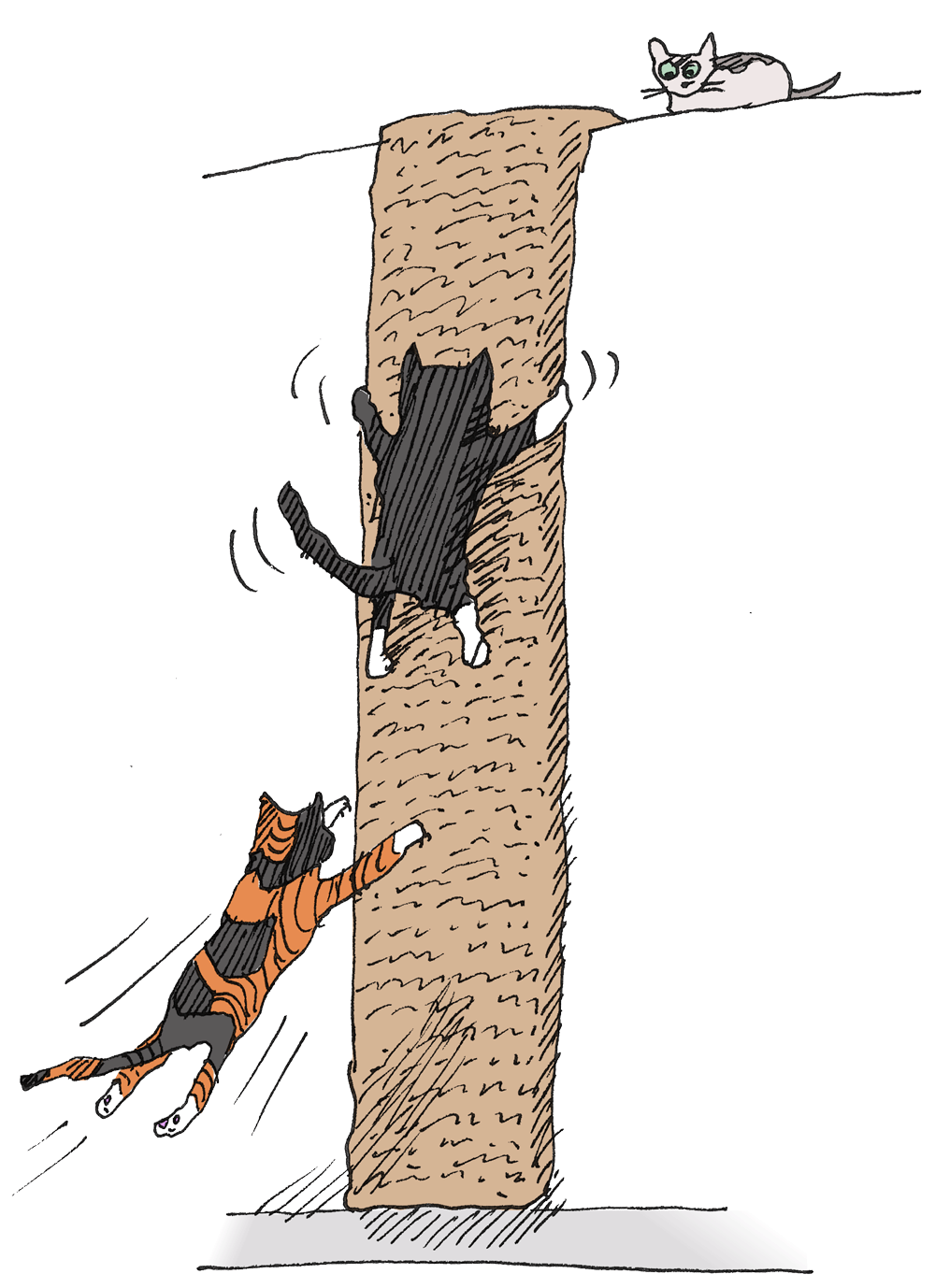
-
Gather the Supplies
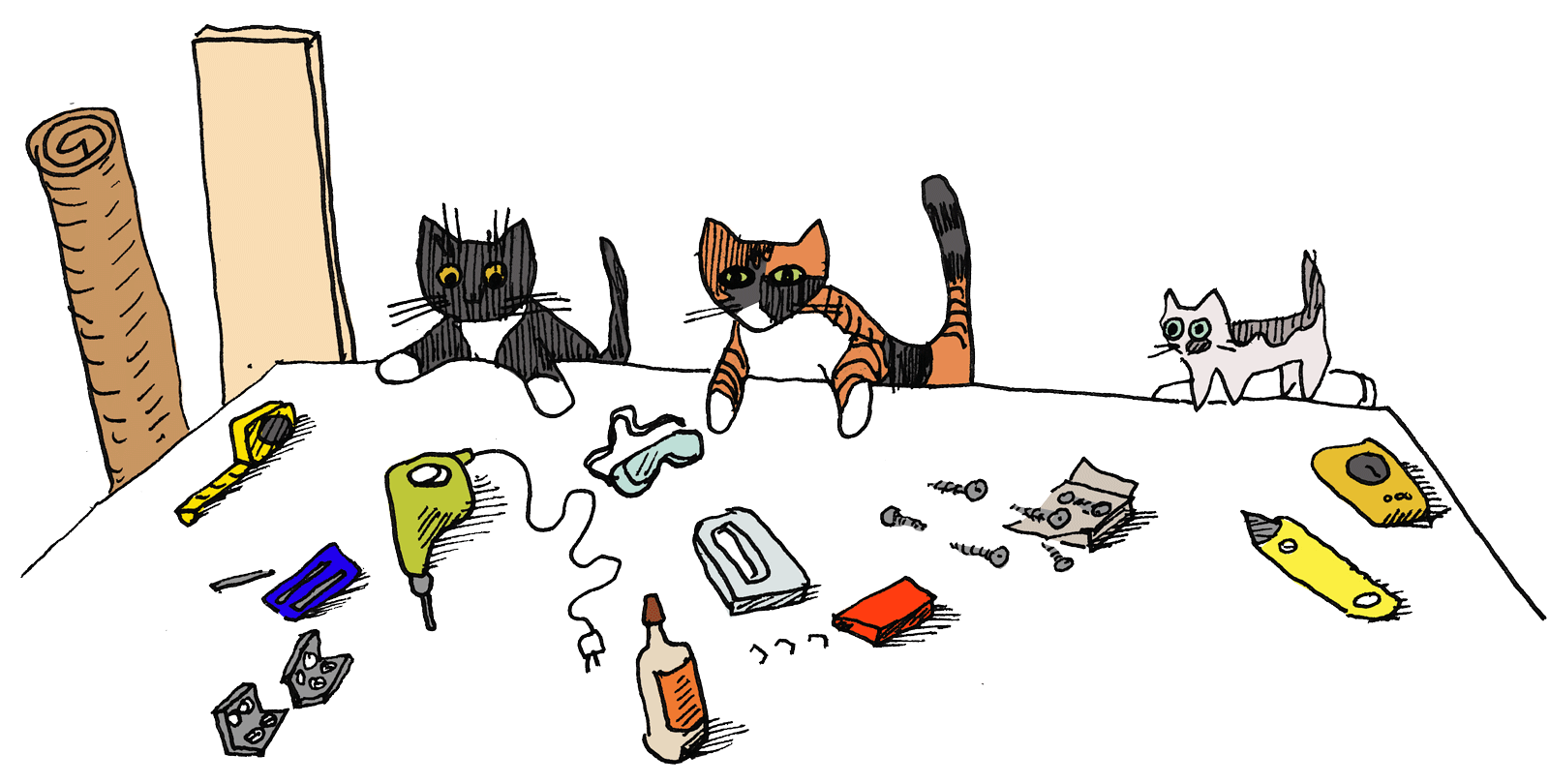 ToolsMaterials
ToolsMaterialsChoosing the Right Kind of Carpet
The best kind of carpet for an optimal grip is coir (coconut fiber). However, any kind of carpet that is woven in loops will work (i.e. not shag carpet or other "cut pile" carpets).

Coir is more durable than sisal or wool and will look like new even if your cat uses the climber as a scratching post. You can purchase coir from a roll at a large carpet store (this product is not available at hardware stores such as Home Depot). You can find long and skinny remnants for a good price but make sure that the loops of the piece you buy run parallel to the floor.

As a last resort, IKEA’s SINDAL door mats are great for climbing, but shed small particles of fiber that have to be swept daily and will have to be replaced once a year.
Coir sample
-
Choose a Location
Use the stud finder to locate the stud in your wall that is closest to where the climber will be mounted. Usually these are vertically spaced about 16" apart in modern, drywall-based construction (sometimes 24"). Always check that you aren’t drilling where there may be ductwork or wiring behind the wall.

Mark the location of the stud, and measure how tall the climber will be. If you have baseboard at the bottom of your wall, subtract its height to the final measurement.
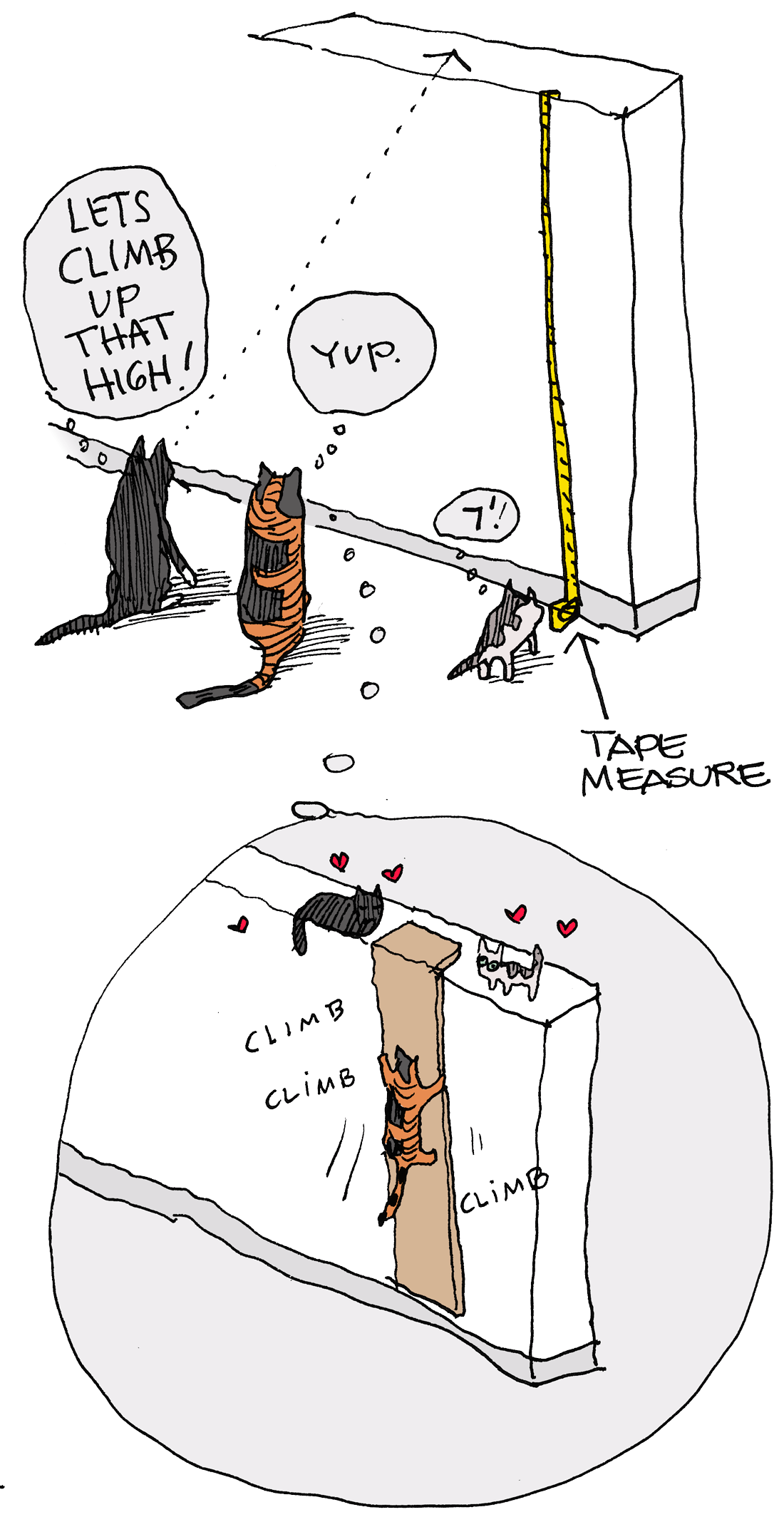 For additional information on mounting something to the wall, see this Popular Mechanics article.Once you determine what your wall is made out of, get the appropriate kind of screws (we had metal studs, and used self-drilling metal screws). If you don't know what kind of studs you have and you live in an apartment, the studs are most likely wood and you will need to use wood screws. Make sure that your screws are long enough to go through the climber, the wall material (e.g. drywall) and go into the stud.
For additional information on mounting something to the wall, see this Popular Mechanics article.Once you determine what your wall is made out of, get the appropriate kind of screws (we had metal studs, and used self-drilling metal screws). If you don't know what kind of studs you have and you live in an apartment, the studs are most likely wood and you will need to use wood screws. Make sure that your screws are long enough to go through the climber, the wall material (e.g. drywall) and go into the stud. -
Cut the Wood
Once you you’ve measured the height you want your climber to be (Step 2), head to the store to purchase the wood board. An ideal width for cats to grip is 9”.

Get the store to cut the board to the length you’ve measured in Step 2 (they usually do it for free). You need one tall piece for the climber and one short piece for the overhang that will rest on top of where you’re mounting the climber (you can get both pieces from just one board).

If you don't have a place in your apartment that your cat could climb on top of, see our Variations section.
-
Cut the Carpet
Cut carpet to the correct size using large scissors (or get the carpet store to cut it for you).
Width = Board Width + 4" + 4"
Height = Tall Board Height + Short Board Height + 4" + 4"
-
Build the Structure
Attach the two pieces of wood together using the brackets and short screws. Mamacita was #blessed with herculean strength and can do this with a screwdriver. If you aren’t so lucky, it’s time to get the drill.
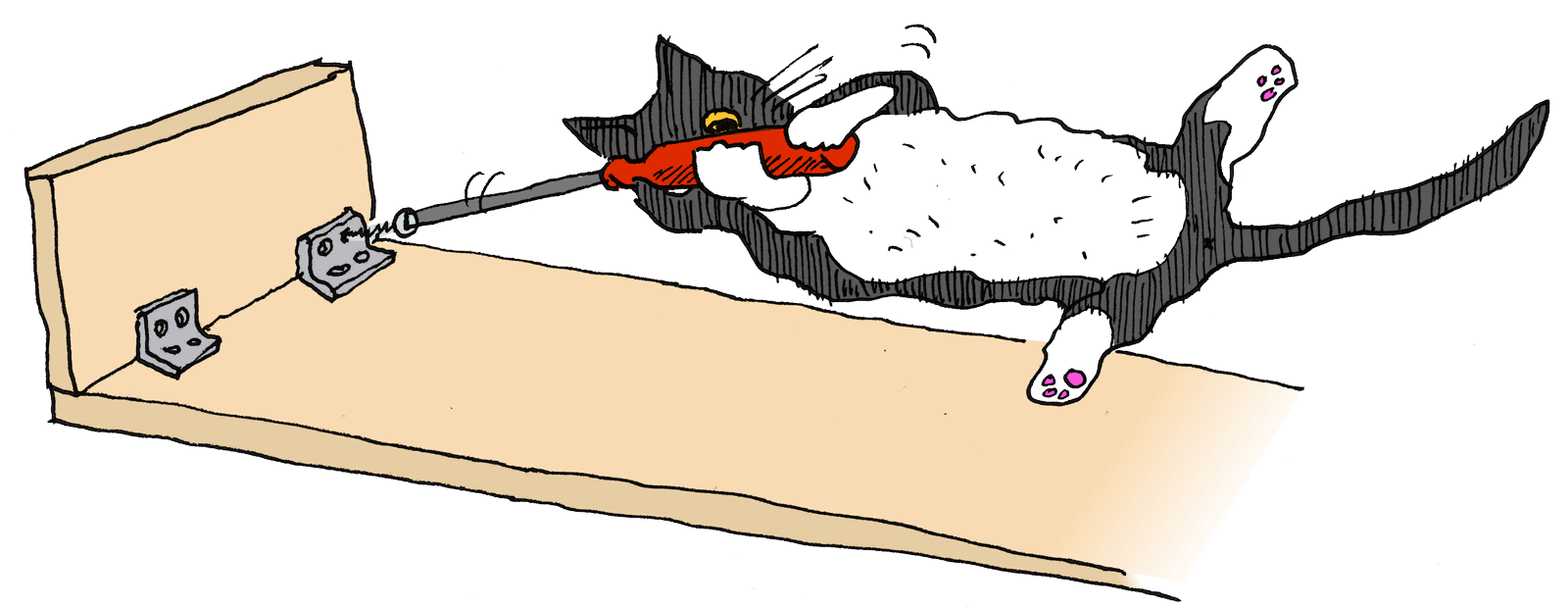
-
Wrap the Carpet
Glue the tall board to the the back of the carpet, leaving 4" on each side.
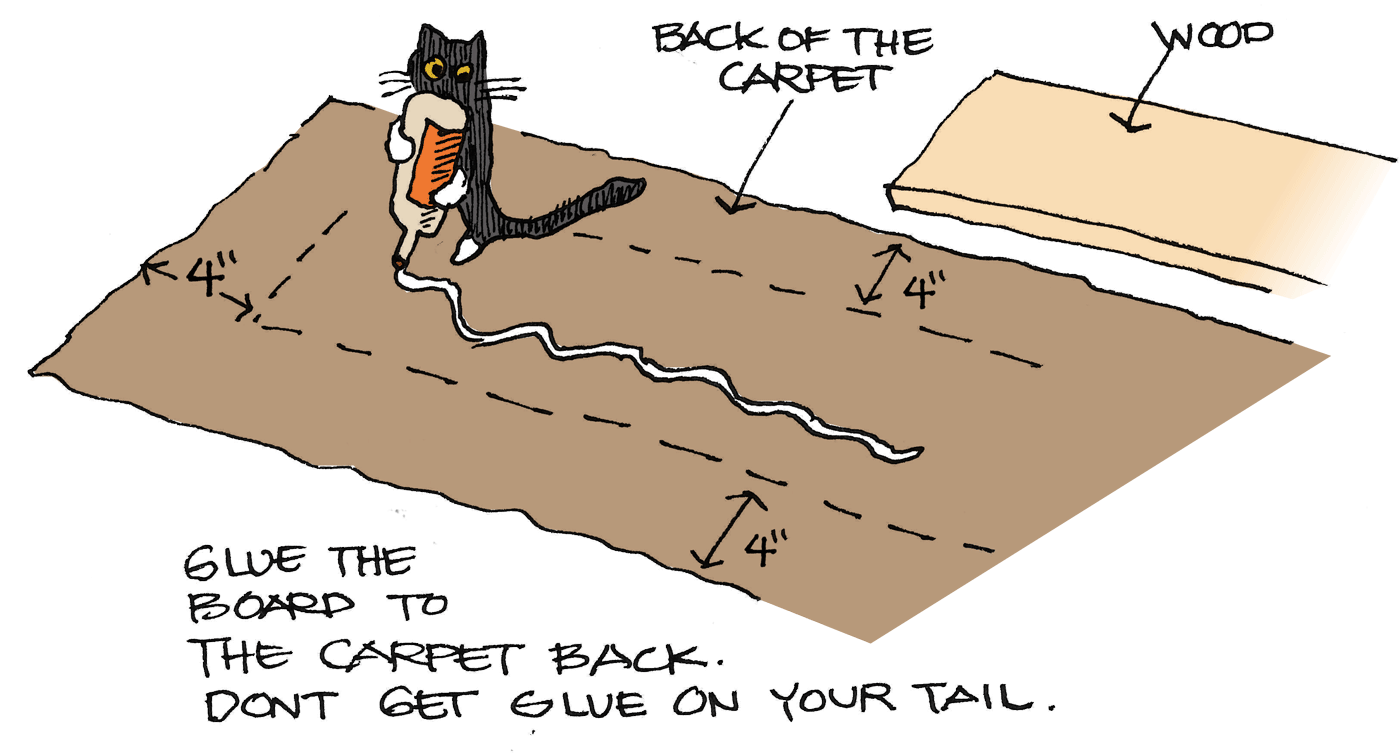
Weight the board with something heavy, and wait for the glue to dry.
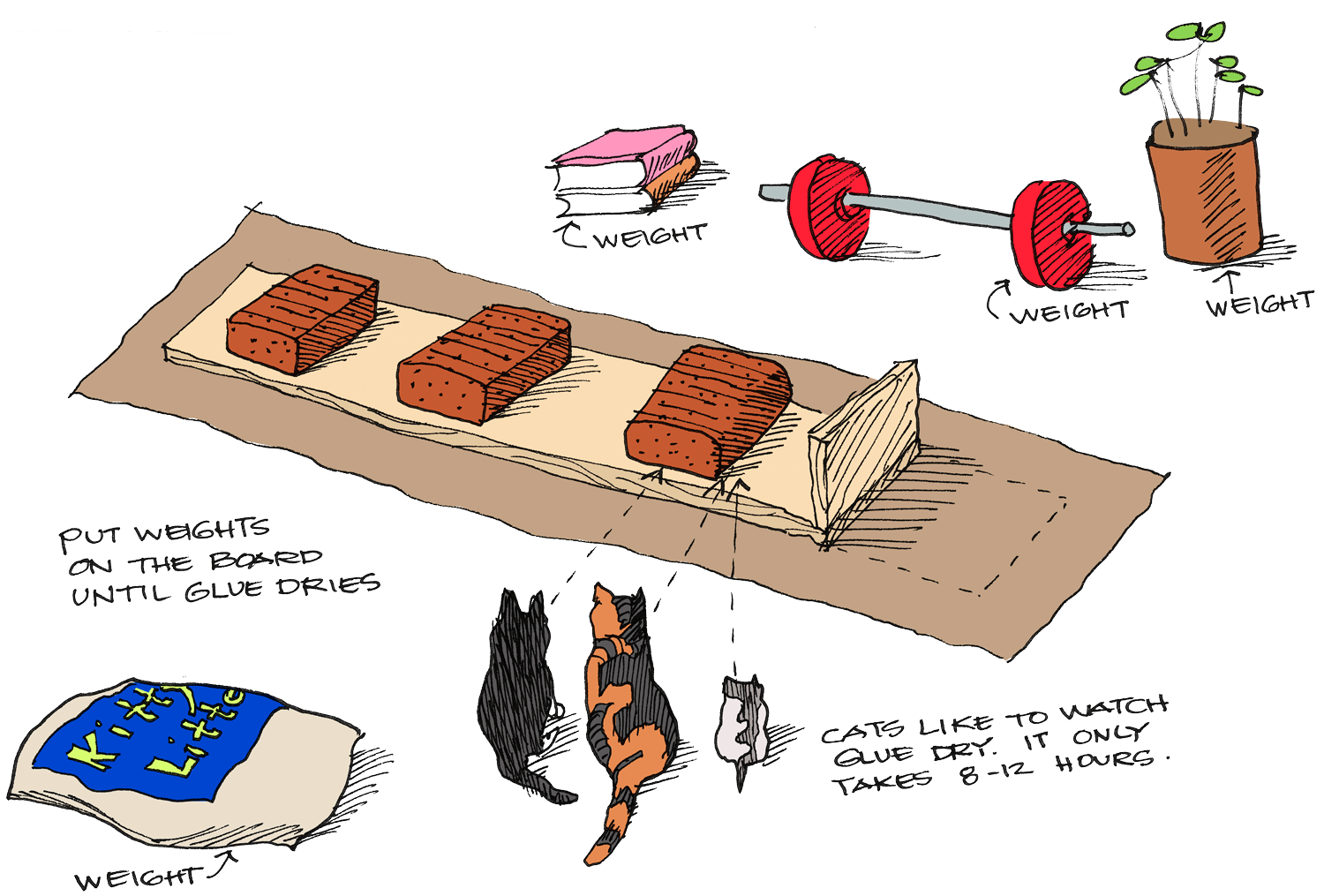
Pull the extra material around the board as tight as you can, and staple the carpet to board approximately every 5”, starting at the bottom and going to the top (where the short board is attached).

Cut away the extra carpet so it doesn’t overlap.
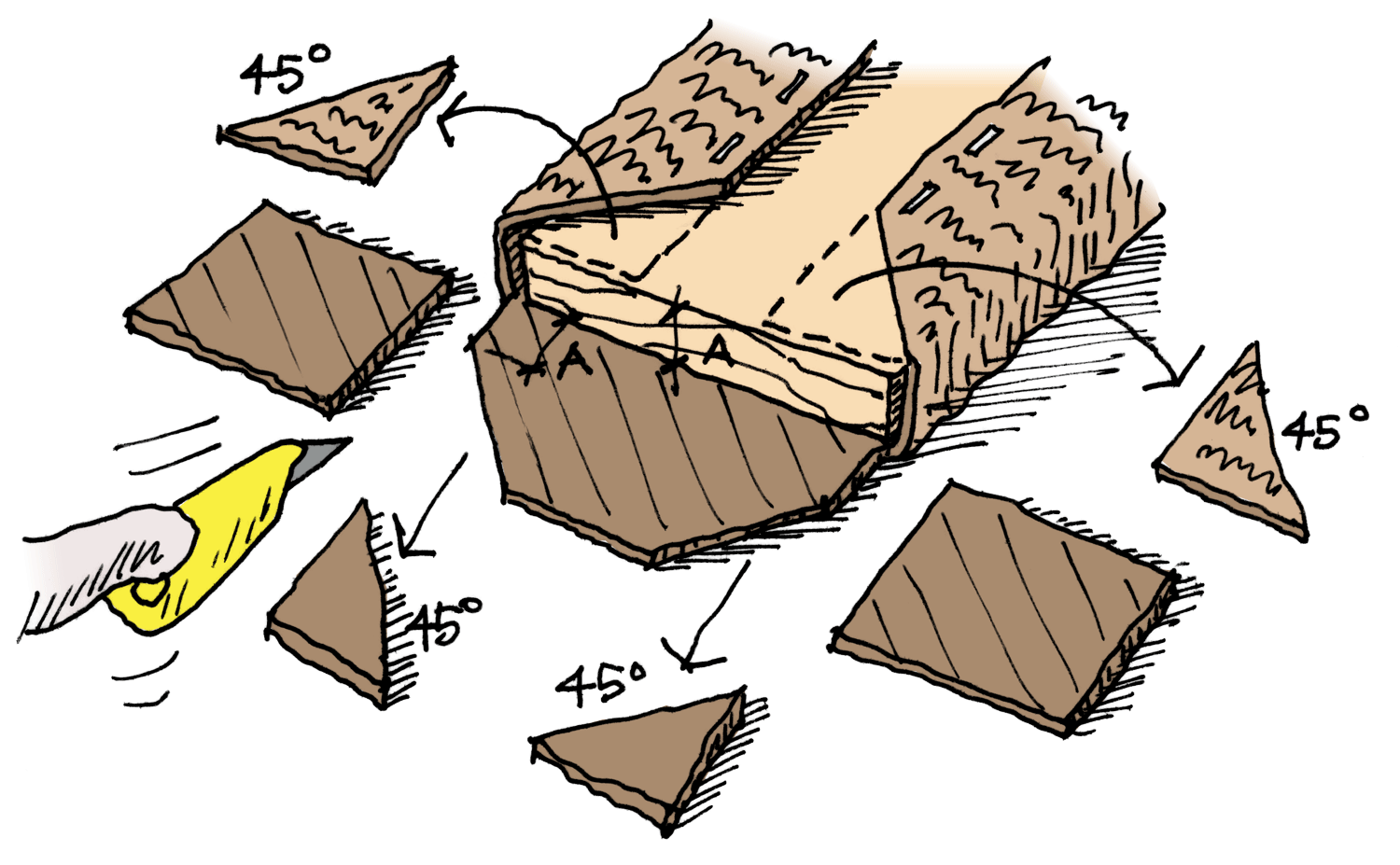
Wrap the remaining carpet around the sides, and staple it in place. Remember, there should only be one layer of carpet.
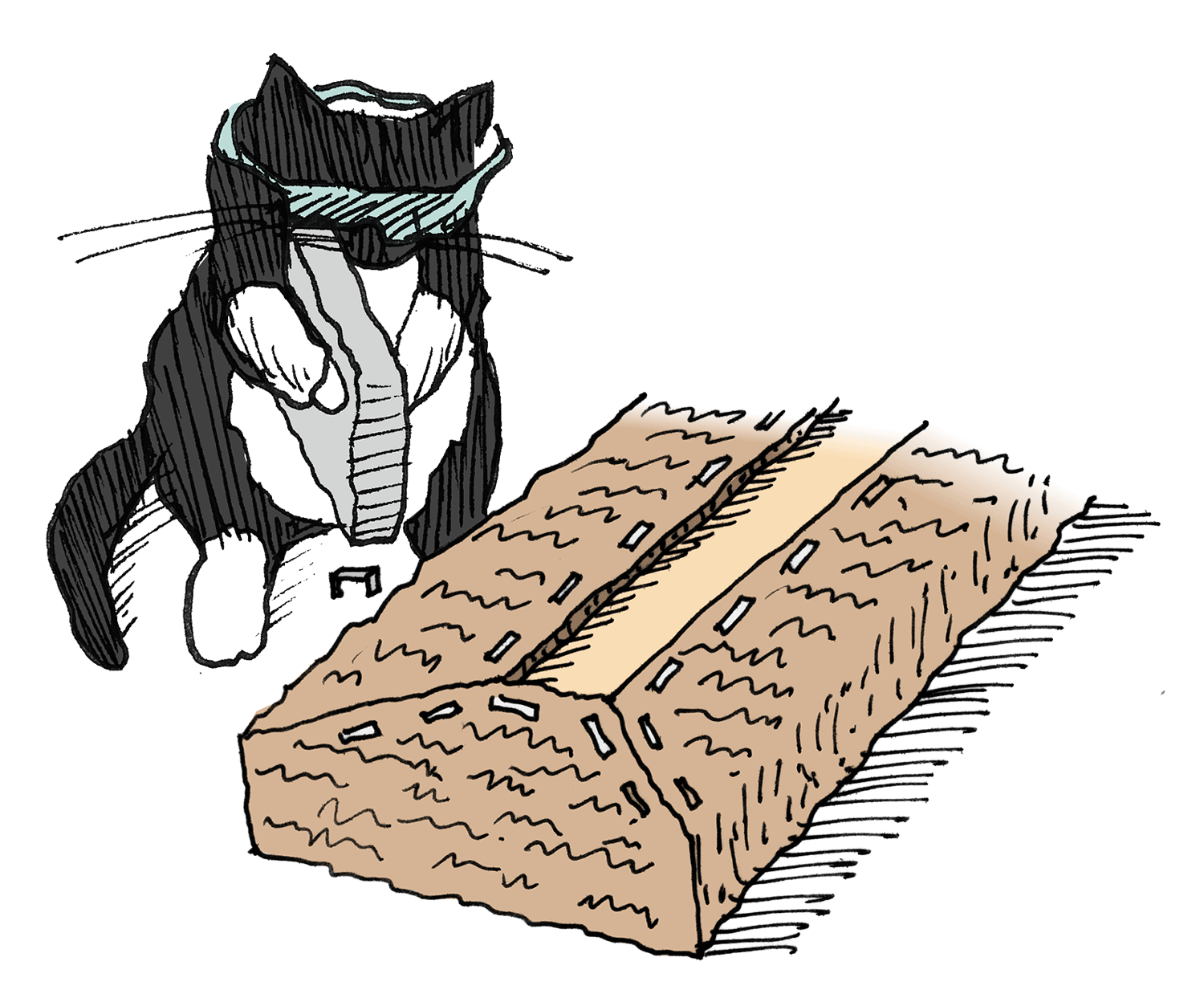
-
Attach the Climber
Position the climber where you want it to be attached, and add a screw through the front of the climber into the stud at 1–2' intervals.
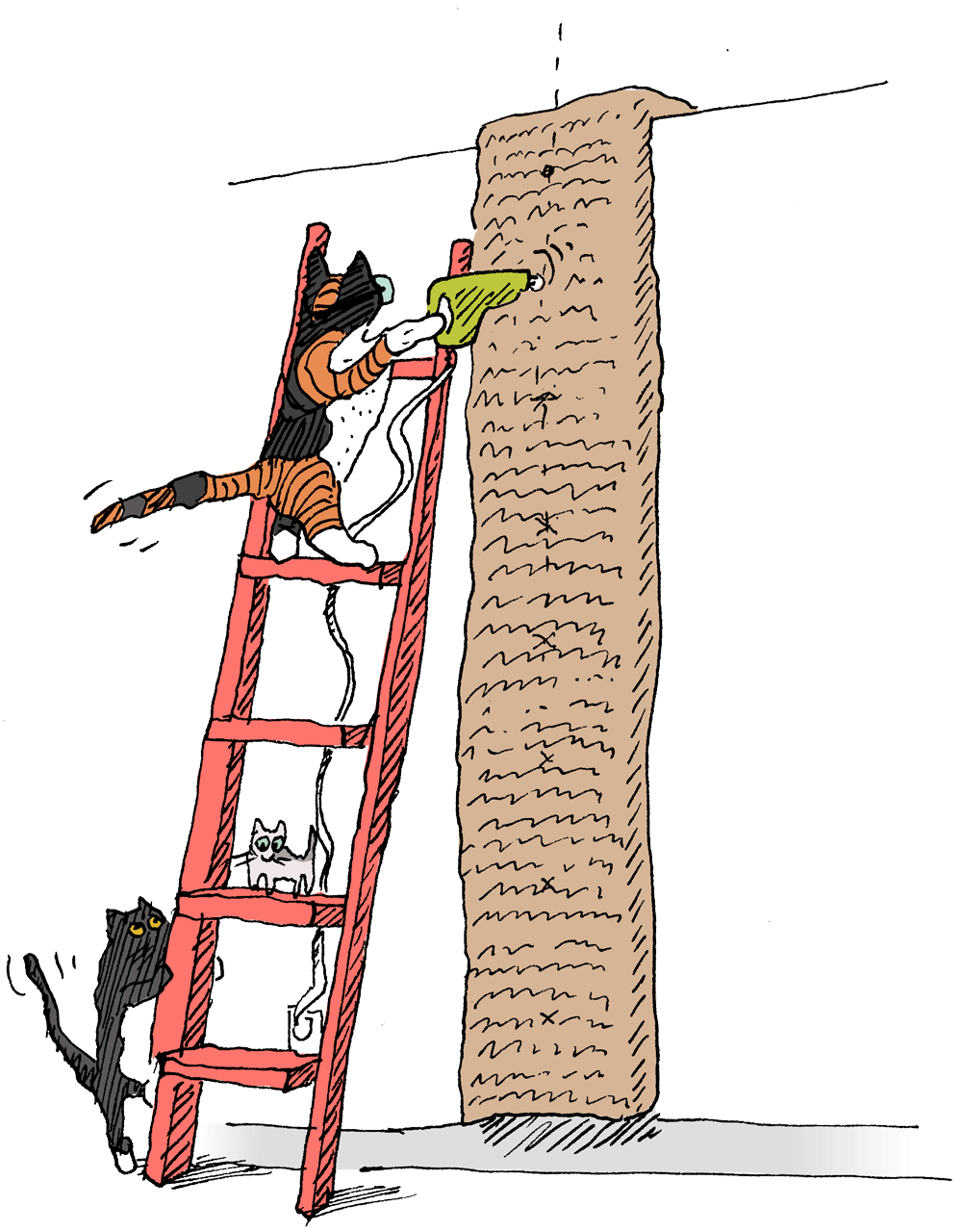
To prevent the carpet from sagging over time, add 2 rows of staples at ~8" intervals, as needed.
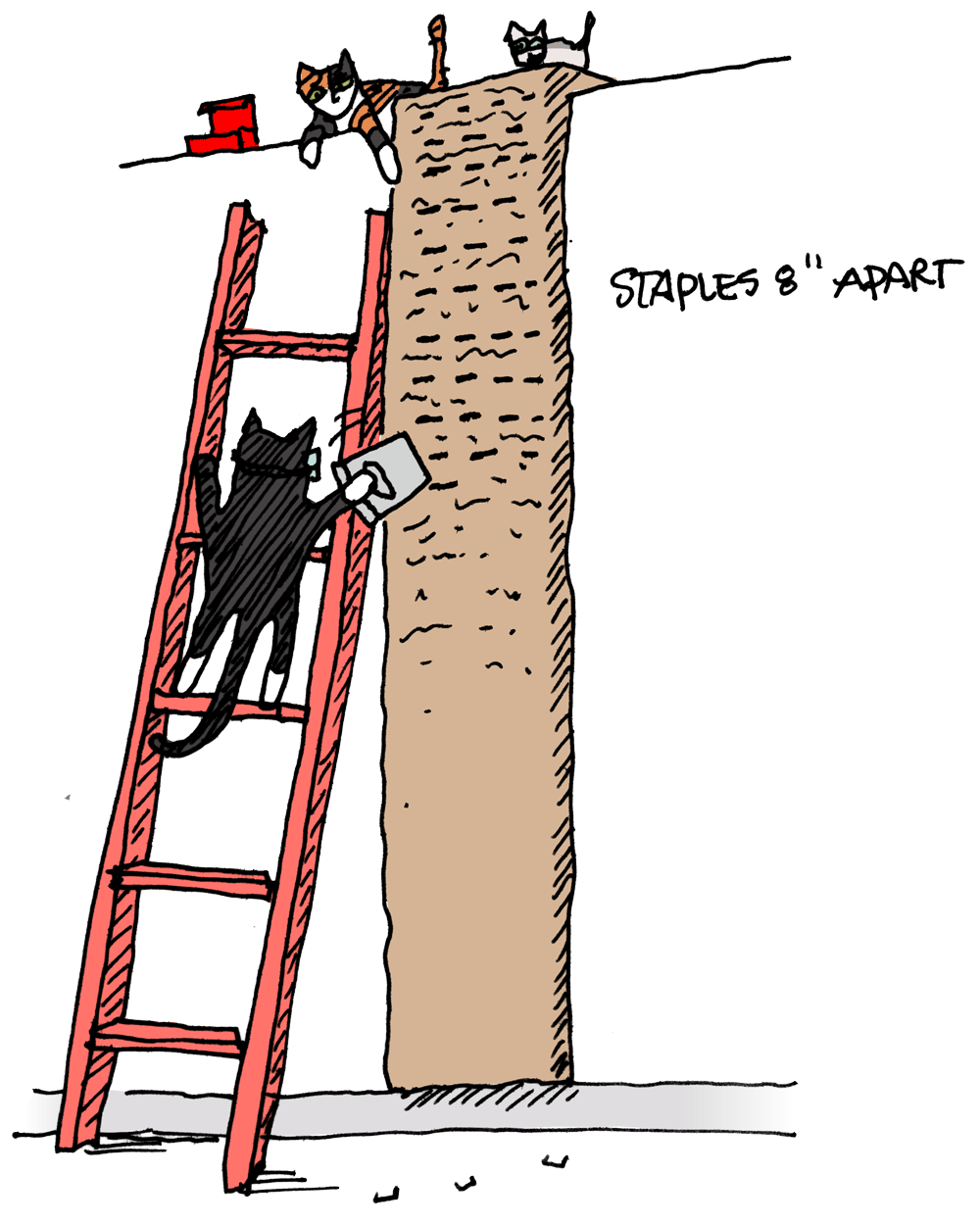
Eat a treat to celebrate!
-
How do I climb this thing?
It can take some cats a while to develop the technique and conditioning to climb all the way to the top. Indoor adults can have a hard time finding a grip that makes them feel safe. At the beginning, your cat will most likely climb a couple of feet off the floor and appear to be stuck, not knowing if they can go further or if they can go back (they can do both, but they suffer a catsistential crisis). You can help them by holding a treat or a wand toy a little higher in each successive climb. Depending on your cat’s level of comfort with being held, you can give them a gentle booty push and let them use their front paws to get used to this motion. Think of it as their first time doing CrossFit and give them a few weeks to learn the proper technique.
-
How the heck do I get down?
Getting down is a learning process and you will be the instructor. Until they have mastered the art of climbing backwards (butt first), you will have to carry them down. For their safety, it is best to barricade the climber (with a ladder for example) while you are away, preventing them from using it. Once you have taught them how to come down, they will never forget.
Your cat’s natural instinct will be to go head first, but they know this is a bad idea and generally won’t try. After your cat is familiar with gripping the climber, pick them up and place them at a low spot on the climber and guide them back to the floor (1). Repeat this process placing the cat higher each time (2) until they are comfortable returning from the top of the climber to the floor (3), climbing butt first.
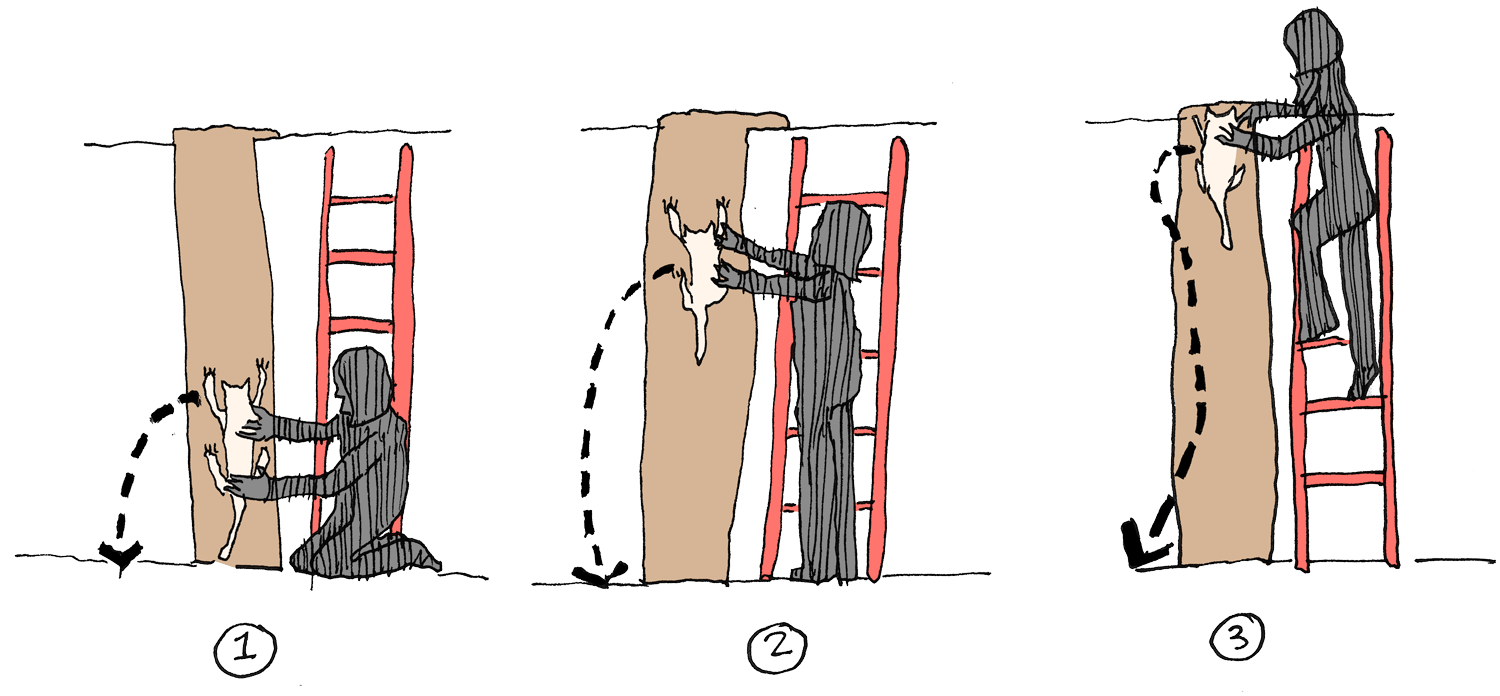
Next, teach them to rotate their body at the top of the climber before climbing down. Get on the ladder while your cat is at the top and turn them around, placing them butt first and let them climb down from the top. Repeat this step until your cat does it on their own.
If you are reading this and thinking “my cat will never learn this!”, you can add some special accommodations to make climbing down easier. Attach a shelf just below the top of the climber, and your cat can start climbing down by first climbing up which is a more natural motion.
No matter what, if you have an indoor cat it will take some time to figure it out! Have patience, and modify where necessary. Apply treats liberally.
-
Variations
We built this kind of climber (I mean we commissioned Mamacita, Bonita and Bunny to build us this climber) because there was a natural destination at the top of our closet. This would also work on the side of your kitchen cabinet, on a staircase or on the side of a large armoire that you don’t mind drilling into.
1. Go short; a short climber makes a good, discrete scratching post. Even without a destination, a short climber can add an exciting third dimension when chasing each other around the apartment.
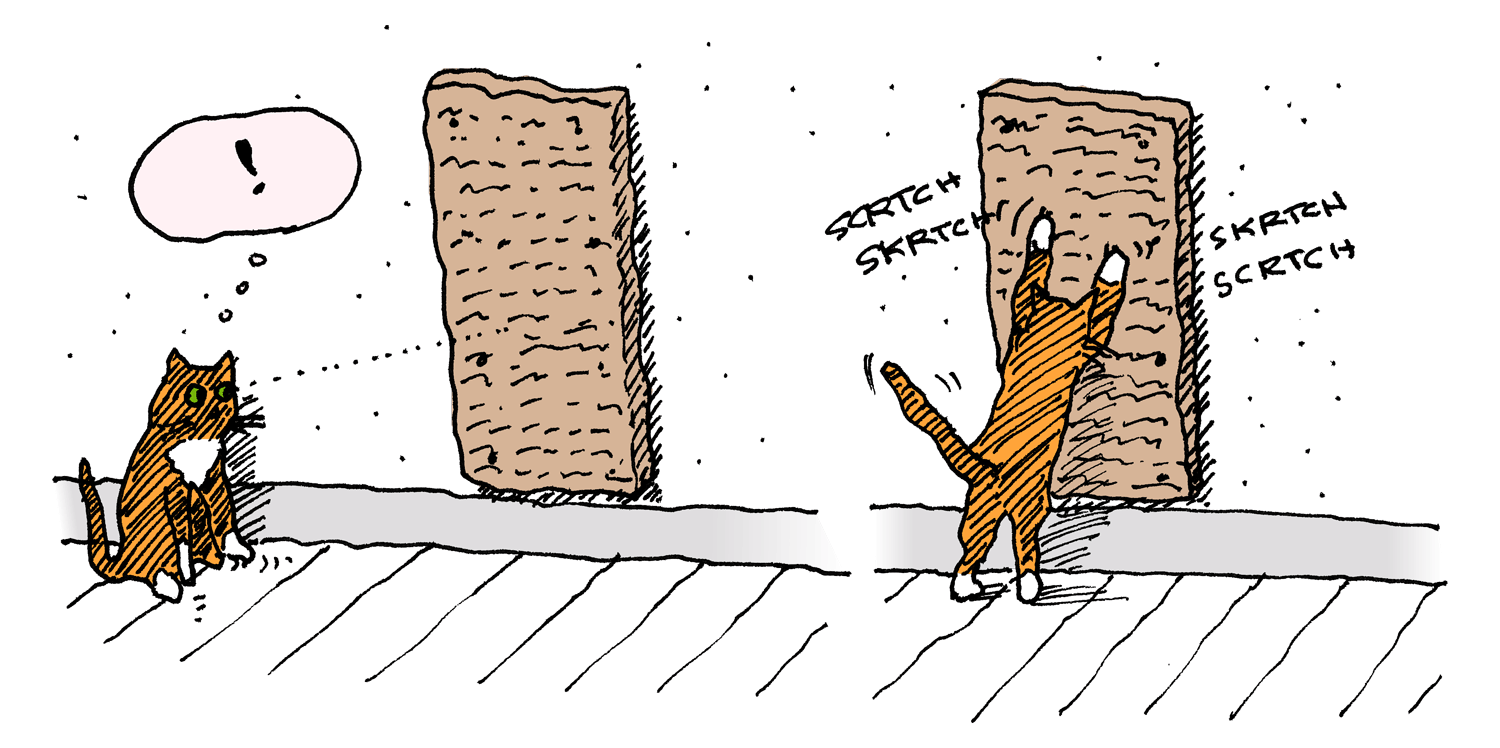
2. Use an existing perch; if there is a high surface like a bookshelf or refrigerator, build a flat climber adjacent to it. The climber should extend a “cat length” above the perch allow them to climb down. Remember to secure the perch if it isn’t already stable in account for rough landings and takeoffs.
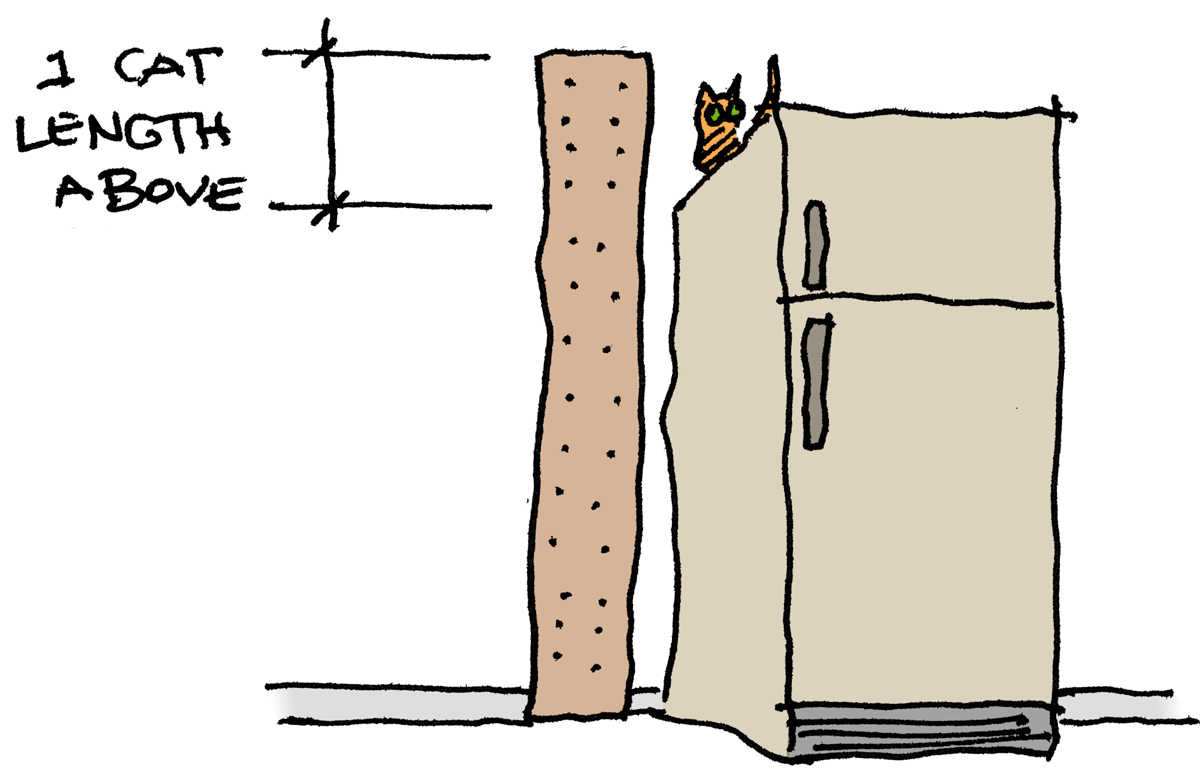

3. Add a perch; if there aren’t any high surfaces available, you can add one yourself. Build a flat climber and add a bookshelf adjacent to it. The climber should extend a “cat length” above the shelf to allow them to climb down. Remember to screw the perch into an existing frame (e.g. above a window) or into a stud so that it can support the weight of your cat(s).

Disclaimer
This website and the material covered is for informational purposes only. Some of these projects may not be appropriate for all ages or skill levels. Please use a clear mind and a safety first approach while following the tutorials provided by Cats Without Jobs. We do not make any claims of the safety of the projects and techniques listed on this site (for you or your cat) and will not take responsibility of what you do with the information provided by this site. Never let your cat(s) climb unattended until they know how to come down on their own.